#nautiloid fossil Cretaceous
Explore tagged Tumblr posts
Photo

Cenoceras Fossil Nautilus – Cretaceous – Saint-Maixent-l'École, France – Alice Purnell Collection – 100% Genuine with Certificate
This listing features a scientifically valuable and beautifully preserved fossil nautilus of the genus Cenoceras from the Cretaceous period, found in the fossil-rich region of Saint-Maixent-l'École, France. This piece is part of the distinguished Alice Purnell Collection, known for its museum-grade, historically documented fossil specimens.
Cenoceras is a genus of extinct nautiloid cephalopods that existed from the Late Triassic to the Cretaceous. These marine molluscs were characterised by smooth, rounded shells and simple suture patterns. They are considered close relatives of modern nautiluses but display evolutionary traits unique to ancient oceans. With a coiled shell composed of internal chambers, Cenoceras used gas regulation to navigate the seas as a free-floating predator and scavenger.
This specimen offers excellent preservation, highlighting the classic coiling and chamber arrangement of the nautilus shell.
Geological Context: The Cretaceous period (145–66 million years ago) was a time of high sea levels and thriving marine ecosystems across Europe. The region of Saint-Maixent-l'École in western France is well known for producing marine fossils from Cretaceous sediments, including ammonites, nautiloids, and bivalves. Fossils from this area often show excellent preservation due to the fine-grained limestone and marl formations.
Key Details:
Genus: Cenoceras (Fossil Nautilus)
Fossil Type: Extinct marine cephalopod
Age: Cretaceous (~145–66 million years ago)
Location Found: Saint-Maixent-l'École, France
Provenance: From the Alice Purnell Collection
Condition: Very good preservation with visible shell form and coiling
Authenticity: 100% genuine specimen, supplied with a Certificate of Authenticity
Scale: Please refer to 1cm scale cube in the photo for full sizing
Photo: The actual specimen shown is what you will receive
Scientific & Display Value: Cenoceras fossils offer insight into the evolutionary path of nautiloid cephalopods and their role in ancient marine ecosystems. This example, from the trusted Alice Purnell Collection, is ideal for display, education, or research. Its rarity and provenance add to its collectability and value.
All of our Fossils are 100% Genuine Specimens & come with a Certificate of Authenticity.
Fast & Secure Shipping – Professionally packaged and dispatched promptly for safe delivery.
Add this elegant and historic marine fossil to your collection with this genuine Cenoceras nautilus fossil from the Cretaceous of Saint-Maixent-l'École, France.
#Cenoceras nautilus fossil#fossil nautilus France#Cretaceous marine fossil#Saint-Maixent-l'École fossil#certified fossil cephalopod#real nautilus fossil France#Cenoceras mollusc fossil#fossil from Alice Purnell Collection#nautiloid fossil Cretaceous#collector fossil France#marine invertebrate fossil
0 notes
Text
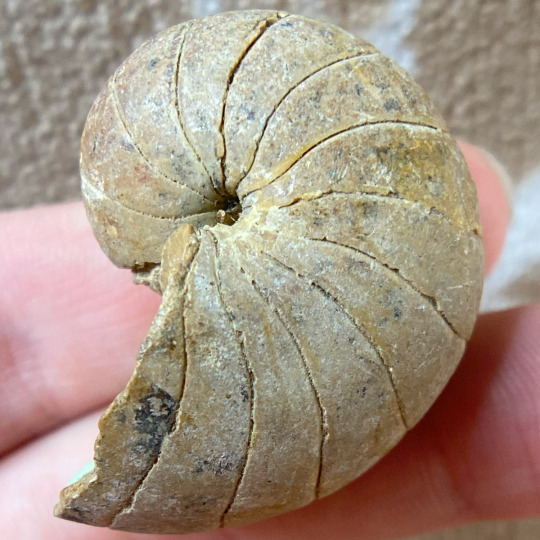
A fossilized Cretaceous aged nautilus of a Nautilus sp. from the Ariyalur Beds in Pondicherry, India. Unlike the similar looking ammonites, these shelled cephalopods survived the K-Pg extinction at the end of the Cretaceous and survive to the modern day. Contrary to popular belief, nautiloids are not closely related to ammonites in particular other than both being cephalopods like squids and octopi.
#nautilus#nautiloid#cephalopod#fossils#paleontology#palaeontology#paleo#palaeo#cretaceous#mesozoic#prehistoric#science#paleoblr#ノーチラス#オウムガイ科#オウムガイ#化石#古生物学
4 notes
·
View notes
Text

The distinctive pinhole eyes, leathery hood, and numerous tentacles of modern nautiluses were traditionally thought to represent the "primitive" ancestral state of early shelled cephalopods – but genetic studies have found that that nautiluses actually secondarily lost the genes for building lensed eyes, and their embryological development shows the initial formation of ten arm buds (similar to those of coeloids) with their hood appearing to be created via fusing some of the many tentacles that form later.
There's a Cretaceous nautilidan fossil that preserves soft tissue impressions of what appear to be pinhole eyes and possibly a remnant of a hood, so we know these modern-style nautilus features were well-established by the late Mesozoic. But for much more ancient Paleozoic members of the lineage… we can potentially get more speculative.
So, here's an example reconstructed with un-nautilus-like soft parts.
Solenochilus springeri was a nautilidan that lived during the Late Carboniferous, around 320 million years ago, in shallow tropical marine waters covering what is now Arkansas, USA.
Up to about 20cm in diameter, (~8"), its shell featured long sideways spines which may have served as a defense against predators – or possibly as a display feature since they only developed upon reaching maturity.
———
NixIllustration.com | Tumblr | Patreon
References:
Anthony, Franz. "500 million years of cephalopod fossils" Earth Archives, 19 Feb. 2018, https://eartharchives.org/articles/500-million-years-of-cephalopod-fossils/index.html
Klug, Christian, et al. "Preservation of nautilid soft parts inside and outside the conch interpreted as central nervous system, eyes, and renal concrements from the Lebanese Cenomanian." Swiss Journal of Palaeontology 140 (2021): 1-11. https://doi.org/10.1186/s13358-021-00229-9
Korn, Dieter, and Christian Klug. "Early Carboniferous coiled nautiloids from the Anti-Atlas (Morocco)." European Journal of Taxonomy 885 (2023): 156-194. https://doi.org/10.5852/ejt.2023.885.2199
Kröger, Björn, Jakob Vinther, and Dirk Fuchs. "Cephalopod origin and evolution: a congruent picture emerging from fossils, development and molecules: extant cephalopods are younger than previously realised and were under major selection to become agile, shell‐less predators." BioEssays 33.8 (2011): 602-613. https://doi.org/10.1002/bies.201100001
Mikesh, David L., and Brian F. Glenister. "Solenochilus Springeri (White & St. John, 1868) from the Pennsylvanian of Southern Iowa." Proceedings of the Iowa Academy of Science. Vol. 73. No. 1. 1966. https://scholarworks.uni.edu/pias/vol73/iss1/39/
Shchedukhin, A. Yu. "New Species of the Genus Acanthonautilus (Solenochilidae, Nautilida) from the Early Permian Shakhtau Reef (Cis-Urals)." Paleontological Journal 58.5 (2024): 506-515. https://www.researchgate.net/publication/384922837_New_Species_of_the_Genus_Acanthonautilus_Solenochilidae_Nautilida_from_the_Early_Permian_Shakhtau_Reef_Cis-Urals
Wikipedia contributors. “Nautilida” Wikipedia, 26 Nov. 2024, https://en.wikipedia.org/wiki/Nautilida
Wikipedia contributors. “Solenochilus” Wikipedia, 28 Apr. 2022, https://en.wikipedia.org/wiki/Solenochilus
#science illustration#paleontology#paleoart#palaeoblr#solenochilus#solenochilidae#nautilida#nautiloid#cephalopod#mollusc#invertebrate#art#doing the inverse of all those ammonite reconstructions that make them look like nautiluses
220 notes
·
View notes
Text
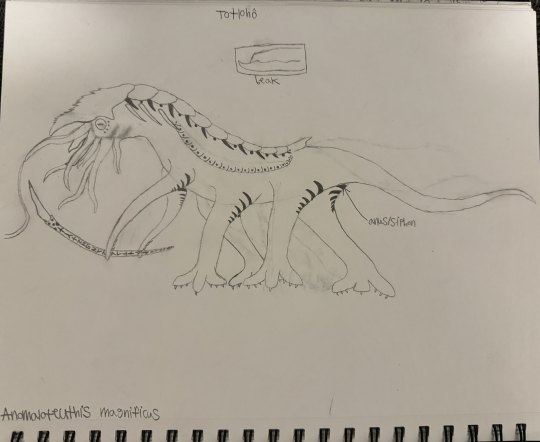
Totlohô
Kingdom: Animalia
Phylum: Mollusca
Class: Cephalopoda
Subclass: Nautiloidea
Superorder: Alysidaceratoidea
Order: Paratetrapoda
Superfamily: Cotylopodoidea
Family: Cotylopodidae
Subfamily: Anomaloteuthiinae
Genus: Anomaloteuthis
Species: A. magnificus (”magnificent unusual squid”)
Ancestral species: possibly Plectronoceras cambria
Temporal range: Early Jurassic (Toarcian) to Early Cretaceous (Hauterivian) (180 - 130 mya)
Information:
While humans have long seen themselves as the first and only sapient species to inhabit their planet, in all truth, there existed another in Xenogaea several hundreds of millions of years ago, one whose legacy can still be felt throughout the region untold eons later in their bizarre ruins and artifacts: the Totlohô-tu-Tẋusko/Tẋusko-tu-Totlohô (IPA: /to̞t͡ɬo̞hɔ tu t͡ʃusko̞/ OR /t͡ʃusko̞ tu to̞t͡ɬo̞hɔ/, meaning "ancestor of (the) architect"), better known as simply the Totlohô (/to̞t͡ɬo̞hɔ/, simply meaning "architect").
As soft tissues of this species have only rarely been preserved, and hard tissues consist only of armor plating and beaks, their size and general appearance alone must be inferred purely based on known proportions from living relatives, other members of the aberrant nautiloid clade Alysidaceratoidea, known more colloquially as the shrikehounds. The most reliable size estimate places them at around 12 feet long, 6-7 feet tall, and weighing close to 600 lbs. The appearance of these creatures, based on ancient stone murals, would seem to suggest that they were centaur-like in build, sporting six main limbs along with a menagerie of smaller tentacles around the face, which housed a long, narrow beak with a noticeable underbite. The exact coloration of this species isn’t known, though as murals exist which depict them, it can be inferred that they might have had a similar coloration pattern to living nautili, with a creamy-colored body and eyes with an earthy red shell and head piece.
Living shrikehound species are not particularly vocal, with only the paratetrapods having an analogue to proper vocal cords. This species was presumably vocal in some capacity, though the exact vocalizations cannot be deduced. It has been suggested that like their living relatives, they might have been able to produce clicks, grunts, warbles, rumbles, belches, screeches, and shrieks. It has been suggested, however, that they may have convergently evolved chromatophores like some of their living relatives and may have had a primarily visual language instead, one which has not, as of yet, been decoded.
Much of these organism's general biology is not known conclusively. Most evidence points to a carnivorous diet, consisting mainly of small dinosaurs/paravians, but also other terrestrial nautiloids, small mammals, and a bizarre group of terrestrial acanthodians known as coelospondyls. Though the exact place where they first evolved has yet to be conclusively found, fossilized beaks first appear in the Matansitra Formation in the southwest of the Isle of Perils, though later formations across the entire archipelago show that almost every habitable landmass sported a population of these creatures at one point. Dubious material from areas outside the archipelago, including what is now China and Australia, suggests they may have eventually left the archipelago at some point as well. At their peak during the Kimmeridgian age of the Late Jurassic epoch roughly 150 millions years ago, their population size was likely upwards of 40 million. Very little (if anything) can be inferred about their reproductive biology, though murals would seem to suggest that courtship and copulation was a very long, drawn-out process, treated almost as an art form unto itself. From their closest relatives, it can be inferred that the males, using a modified tentacle, deposited sperm into a small groove on the female’s underside, where it could be absorbed and used to fertilize the eggs. Their clutch size is believed to have been anomalously small compared to other species in their clade, possibly no more than 10 eggs at a time. The young appear to have matured at a similar rate to human young, if not slightly faster. Sexual dimorphism does not appear to be a prominent trait within their species.
Not much can be inferred about the behavior of this species from what remnants have been found, though it can be inferred that they were likely highly social creatures with complex social structures. They appear to have engaged in agrarianism and the farming of other animals in their later stages of societal development, as evidenced by a high correlation in dump beak remains found near dump sites for animal bones and shell, and even built cities. Murals would seem to suggest Totlohô society was ruled by a class of elders, the oldest respective members of their society, while the youngest members formed the work force. Song and dance appear to have been ways to bond with one another, and spirituality played a large part in their society’s function. Warfare appears to have been an isolated phenomenon in their society and frequently on a much smaller scale than as seen in humanity, though there exists some evidence of widespread warfare in the later years of existence. Even in their later stages, when they evidently had significantly advanced technology (or, as the more conspiracy-minded would suggest, magic of some kind), the Totlohô still preferred to build their homes out of stone.
During the later stages of their existence, the Totlohô appear to have dabbled in what appears to be highly-advanced technology or potentially even magic of some kind, as evidenced by massive, seemingly Totlhômade, carved, levitating stones covered in glyphs. In a place known as the Square Chasm (picture below, artwork by Dipfruit), a reportedly supernatural space some weary jungle travelers have stumbled upon near a triple-forked river, one of these stones appears to have formed a perfectly square-shaped pocket dimension around itself, where gravity itself appears to bend to the stone’s whim.

Fossilized beaks and hard shells are really the only physical parts of these creatures to have been preserved, and they are the only indication of their existence outside of aforementioned ruins and murals. Their written languages have yet to be decoded, and there are believed to have been several thousand at a given time. What exactly led to their extinction has yet to be conclusively revealed, though murals seem to suggest that, from their perspective, supernatural forces may have been at play, with recurrent imagery of what appears to be demonic figures showing up across several murals. Another recurrent image in these murals is a white bird-like creature with horns, which some have suggested may be related to the mythical white bird seen in Xenogaean mythology, which was said to herald the apocalypse. While some have suggested that these murals may have been painted by one of the last Totlohô, who had simply gone insane from isolation and began painting their hallucinations, others suggest that there might be a grain of truth in these murals, perhaps a war of apocalyptic scale which engulfed the entire species, the demagogues fueling it being portrayed as demonic figures. What this doesn’t explain, however, are the high number of artifacts which appear to be made from an unknown metallic substance, one which is highly durable and in near-pristine condition hundreds of millions of years later. This substance, referred to colloquially as “anomalous tungsten”, is paradoxically lightweight yet durable with a high melting point, seemingly higher than almost any other known metal or metalloid. As this metal has not been found anywhere on Earth or even in any known compounds on Earth or another planet, this begs the question of how and where the Totlohô obtained this substance, leading to a wide menagerie of conspiracy theories, with everything from extraterrestrials to divine beings being suggested as the source from which they obtained this material. Whatever the case, those who have studied the artifacts have claimed to have had vivid dreams where they spoke to the Totlohô shortly after contact. Perhaps this is just a form of confabulation or merely even group hysteria, but nonetheless, it would appear that even long after the Totlohô have left this world, their legacy still manages to touch the human spirit. Finally, they appear to have domesticated a species of coelospondyl, Platycephale aridus, the so-called “flat-faced coelospondyl” (1st picture below, artwork by me), and another species of shrikehound, which is currently unnamed (2nd picture below, artwork by me). These appear to have been utilized as livestock animals.


#novella#speculative evolution#fantasy#scifi#scififantasy#speculative biology#speculative fiction#speculative zoology#worldbuilding#creature art#sophont#sci fi creature#creature design#fantasy creature#creative writing#creature#scifi worldbuilding#fantasy worldbuilding#nautiloid#nautilus#cephalopod#mollusk#cephalopods
18 notes
·
View notes
Text
What is an ammonite?
Ammonites were shelled cephalopods that died out about 66 million years ago. Fossils of them are found all around the world, sometimes in very large concentrations.
The often tightly wound shells of ammonites may be a familiar sight, but how much do you know about the animals that once lived inside?
What were ammonites?
Before we understood what they were, one of the explanations for ammonites was that they were coiled-up snakes that had been turned to stone, earning them the nickname 'snakestones'. But ammonites weren't reptiles: they were ocean-dwelling molluscs, specifically cephalopods.

An ammonite fossil with a carved snake's head
Zoë Hughes, Curator of Fossil Invertebrates at the Museum, explains, 'Ammonites are extinct shelled cephalopods. All of them had a chambered shell that they used for buoyancy.'
The group Cephalopoda is divided into three subgroups: coleoids (including squids, octopuses and cuttlefishes), nautiloids (the nautiluses) and ammonites.
Ammonites' shells make the animals look most like nautiluses, but they are actually thought to be more closely related to coleoids.
'Some of their morphology was closer to that of the coleoid group,' says Zoë. 'We think it’s more likely that ammonites would have had eight arms rather than lots of tentacles like a nautilus, though the shell is more similar to that of a nautilus.'
Ammonites were born with tiny shells and, as they grew, they built new chambers onto it. They would move their entire body into a new chamber and seal off their old and now too-small living quarters with walls known as septa.

Ammonites looked a bit like nautiluses but are thought to be more closely related to coleoids, a group that includes octopuses and cuttlefish © Esteban De Armas/Shutterstock
Zoë adds, 'The ammonite would have lived in one chamber, but we don't know how often they built a new one.
'Previously it has been suggested this could have been a monthly occurrence, but there is no evidence for that. Some studies looking at the chemical composition of the shells - a field called sclerochronology - are starting to gain some insight of how long ammonites might have lived.'
Ammonites' growing shells typically formed into a flat spiral, known as a planispiral, although a variety of shapes did evolve over time. Shells could be a loose spiral or tightly curled with whorls touching. They could be flat or helical. Some species would begin growing their shell in a tight spiral but straighten it out through later growth phases. There were also some more unusual shapes - the species Nipponites mirabilis, which is found in Japan, is exceptionally rare and looks a bit like a knot.
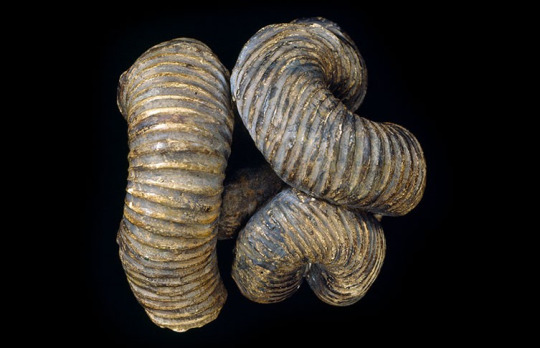
Nipponites mirabilis ammonites grew in an unusual knot shape, rather than in a typical spiral
While ammonite shells are abundant in the fossil record, it was only recently that scientists have found a very rare fossil of the soft parts of an ammonite. However, fossilised evidence of ammonite arms is yet to be found.
Until now, a lot of what we know about ammonites has been inferred based on what we see in living cephalopods.
How old are ammonites?
The subclass Ammonoidea, a group that is often referred to as ammonites, first appeared about 450 million years ago.
Ammonoidea includes a more exclusive group called Ammonitida, also known as the true ammonites. These animals are known from the Jurassic Period, from about 200 million years ago.
Most ammonites died out at the same time as the non-avian dinosaurs, at the end of the Cretaceous Period, 66 million years ago.
Zoë says, 'We didn't quite lose all of them at the end of the Cretaceous. A few species continued into the Palaeogene in the Western Interior Seaway before dying out.'

The astroid that hit Earth 66 million years ago and ended the age of dinosaurs is also thought to have been responsible for the demise of most ammonites. Image by Donald E Davis courtesy of NASA/JPL-Caltech, via Wikimedia Commons
Read more
Why did ammonites go extinct?
At the end of the Cretaceous Period, an asteroid colliding with Earth brought on a global mass extinction. A lingering impact winter halted photosynthesis on land and in the oceans, which had a major impact on food availability and was devastating for ammonites.
Nautiloids, however, which had ancient relatives that lived at the same time as ammonites, survived this mass extinction. It is thought this is in part linked to these groups' preferred water depths.
Zoë explains, 'Nautilus survived probably because it lives deeper in the ocean. Deeper environments were less affected by what was going on in shallow water environments. This is a pattern that can be seen in other groups, aside from cephalopods – fish, for example.
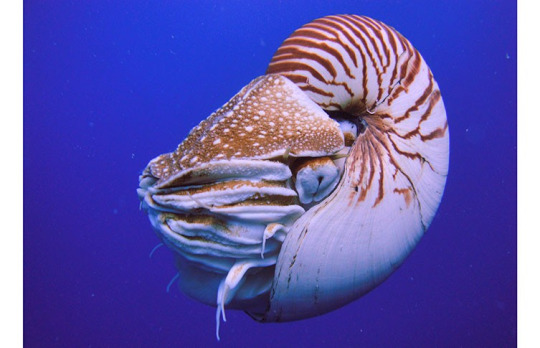
Ammonites mostly died out 66 million years ago, but other cephalopods, such as nautiluses, survived © Manuae via Wikimedia Commons (CC BY-SA 3.0)
The size of hatchlings may also have played in the nautiluses' favour as they were larger and would have been less restricted by the size of food available to them.
How many ammonite species were there?
Scientists can tell species of ammonites apart through several attributes including shell shape, size, age, location, features such as the number and spacing of ribs, defensive spines or shell-strengthening ornamentation.

We know this specimen of Kosmoceras phaeinum is a male from the long prongs, known as lappets, sticking out near the opening of the shell. They might have been used by the male to hold onto the female during mating, a bit like shark claspers.
Read more
But figuring out exactly how many species have been found so far is a bit tricky.
Like modern cephalopods, ammonites displayed sexual dimorphism, which is the noticeable difference in appearance between sexes. But when ammonite fossils that looked unique were found in the past, they tended to be recorded as new species instead of as the microconch (male) or macroconch (female) of an existing species, as this difference between the sexes was not yet known about.
However, it is estimated that over 10,000 species of ammonite - possibly even over 20,000- have been discovered.
Zoë says, 'Ammonites were quite diverse and evolved rapidly, so if you sample stratigraphically through rocks, you can actually see the evolution and the changes through them.'
How big were ammonites?
Ammonites came in a range of sizes, from just a few millimetres to times bigger, with larger sizes more common from the Late Jurassic onwards.
The largest known species of ammonite is Parapuzosia seppenradensis from the Late Cretaceous. The largest specimen found is 1.8 metres in diameter but is also incomplete. If it were complete, this ammonite's total diameter could have been from 2.5-3.5 metres.
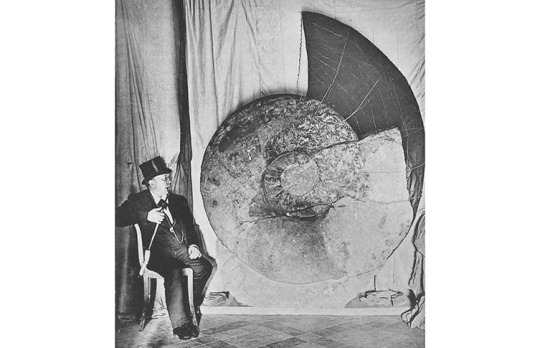
Parapuzosia seppenradensis is the largest known species of ammonite. Image via Wikimedia Commons
Where did ammonites live?
Ammonites lived all around the world. Like their modern-day cephalopod relations, they were exclusively ocean-dwelling. They tended to live in more shallow seas and may have had a maximum depth of about 400 metres.
What did ammonites eat and what ate them?
Though it would largely have depended on their size, ammonites would likely have eaten similar things to today's cephalopods, such as crustaceans, bivalves and fish. Smaller species would probably have eaten plankton. Some other species may have been scavengers, like living nautiloids can sometimes be.
Ammonites would also have served as food for other marine animals. There is evidence of mosasaurs and ichthyosaurs having eaten them, and some fish would likely also have considered them prey.

Ichthyosaurs were among the marine animals that would have preyed on ammonites
Why are ammonites important to science?
Ammonites can be a useful tool for scientists. Because they are so common and evolved so rapidly, they are excellent to help determine the age of the rocks they were fossilised in.
Much of the Mesozoic aged rock in Europe has been sectioned into 'ammonite zones', where rocks in different areas can be associated with each other based on the ammonite fossils found in them.
Zoë says, 'I've done a few identifications where there are bits of ichthyosaur and an ammonite has also been found, and they need it identifying. If you can identify the ammonite, you can really narrow things down. They're a really good indicator for biostratigraphy.'

Another potential use for ammonite fossils could be for telling us about how animals responded to climate change in the past.
Zoë explains, 'Shelled marine animals can help us look back into the past at what was going on in terms of climate change following extinction events. If we have known periods of warming or cooling, we can then infer that into modern climate science.
'Looking at size change will tell you an awful lot. Quite often after an extinction event a lot of shelled animals shrink because they don't have the resources they need to grow. If there isn't the resource to build their shells, it's a bit of a struggle for them. You see that in a lot of organisms.'
What is an ammonite? | Natural History Museum (nhm.ac.uk)
Ammonoidea
Animal
Ammonoids are extinct spiral shelled cephalopods comprising the subclass Ammonoidea. They are more closely related to living coleoids (i.e., octopuses, squid and cuttlefish) than they are to shelled nautiloids (such as the living Nautilus). The earliest ammonoids appeared during the Devonian, with the last species vanishing during or soon after the Cretaceous–Paleogene extinction event. They are often called ammonites, which is most frequently used for members of the order Ammonitida, which represented the only living group of ammonoids from the Jurassic onwards
Scientific name: Ammonoidea
Clade: Neocephalopoda
Domain: Eukaryota
Kingdom: Animalia
Phylum: Mollusca
Ammonoidea - Wikipedia
Is an ammonite fossil worth money?
Well, the largest ammonites with special characters can fetch a very high value above $1,000. Most of them are below $100 though and the commonest ammonites are very affordable. Some examples : an ammonite Acanthohoplites Nodosohoplites fossil from Russia will be found around $150.
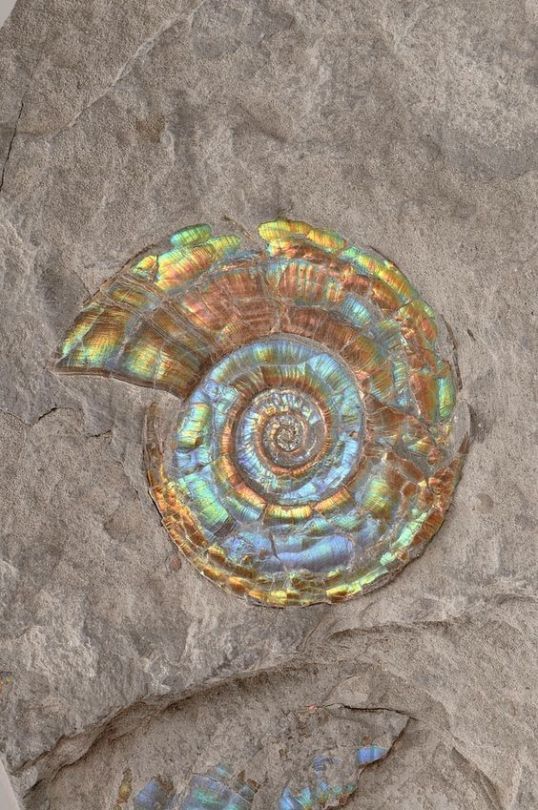
Ammonite fossil
6K notes
·
View notes
Text
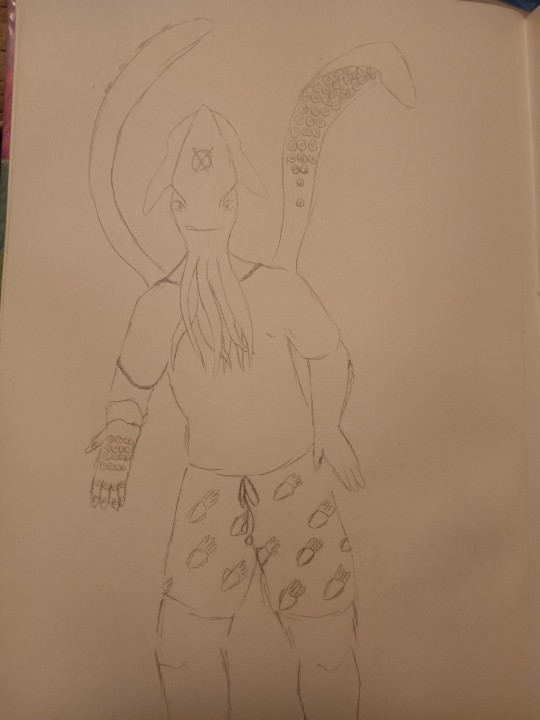
I am Squid. He/they/it. 13'10", thanks for asking. Magic anons are fine. I came from the ocean. And that is my home.
I eat meat. I prefer seafood. But I certainly don't mind a good steak.
Collect my fish. (I'm hungry.) Also, collect all this darn trash. You land dwellers made it, not me. And it's not quite fair for me to have to deal with it.
A squid (pl.: squid) is a mollusc with an elongated soft body, large eyes, eight arms, and two tentacles in the superorder Decapodiformes, though many other molluscs within the broader Neocoleoidea are also called squid despite not strictly fitting these criteria. Like all other cephalopods, squid have a distinct head, bilateral symmetry, and a mantle. They are mainly soft-bodied, like octopuses, but have a small internal skeleton in the form of a rod-like gladius or pen, made of chitin.
Squid diverged from other cephalopods during the Jurassic and occupy a similar role to teleost fish as open water predators of similar size and behaviour. They play an important role in the open water food web. The two long tentacles are used to grab prey and the eight arms to hold and control it. The beak then cuts the food into suitable size chunks for swallowing. Squid are rapid swimmers, moving by jet propulsion, and largely locate their prey by sight. They are among the most intelligent of invertebrates, with groups of Humboldt squid having been observed hunting cooperatively. They are preyed on by sharks, other fish, sea birds, seals and cetaceans, particularly sperm whales.
Squid can change colour for camouflage and signalling. Some species are bioluminescent, using their light for counter-illumination camouflage, while many species can eject a cloud of ink to distract predators.
Squid are used for human consumption with commercial fisheries in Japan, the Mediterranean, the southwestern Atlantic, the eastern Pacific and elsewhere. They are used in cuisines around the world, often known as "calamari". Squid have featured in literature since classical times, especially in tales of giant squid and sea monsters.
Squid are members of the class Cephalopoda, subclass Coleoidea. The squid orders Myopsida and Oegopsida are in the superorder Decapodiformes (from the Greek for "ten-legged"). Two other orders of decapodiform cephalopods are also called squid, although they are taxonomically distinct from squids and differ recognizably in their gross anatomical features. They are the bobtail squid of order Sepiolida and the ram's horn squid of the monotypic order Spirulida. The vampire squid (Vampyroteuthis infernalis), however, is more closely related to the octopus than to any squid.[2]
The cladogram, not fully resolved, is based on Sanchez et al., 2018.[2] Their molecular phylogeny used mitochondrial and nuclear DNA marker sequences; they comment that a robust phylogeny "has proven very challenging to obtain". If it is accepted that Sepiidae cuttlefish are a kind of squid, then the squids, excluding the vampire squid, form a clade as illustrated.[2] Orders are shown in boldface; all the families not included in those orders are in the paraphyletic order "Oegopsida", except Sepiadariidae and Sepiidae that are in the paraphyletic order "Sepiida",
Crown coleoids (the common ancestor of octopuses and squid) diverged in the late Paleozoic (Mississippian), according to fossils of Syllipsimopodi, an early relative of vampire squids and octopuses.[3] True squid diverged during the Jurassic, but many squid families appeared in or after the Cretaceous.[4] Both the coleoids and the teleost fish were involved in much adaptive radiation at this time, and the two modern groups resemble each other in size, ecology, habitat, morphology and behaviour, however some fish moved into fresh water while the coleoids remained in marine environments.[5]
The ancestral coleoid was probably nautiloid-like with a strait septate shell that became immersed in the mantle and was used for buoyancy control. Four lines diverged from this, Spirulida (with one living member), the cuttlefishes, the squids and the octopuses. Squid have differentiated from the ancestral mollusc such that the body plan has been condensed antero-posteriorly and extended dorso-ventrally. What may have been the foot of the ancestor is modified into a complex set of appendages around the mouth. The sense organs are highly developed and include advanced eyes similar to those of vertebrates.[5]
The ancestral shell has been lost, with only an internal gladius, or pen, remaining. The pen, made of a chitin-like material,[5][6] is a feather-shaped internal structure that supports the squid's mantle and serves as a site for muscle attachment. The cuttlebone or sepion of the Sepiidae is calcareous and appears to have evolved afresh in the Tertiary.[7]
Squid are soft-bodied molluscs whose forms evolved to adopt an active predatory lifestyle. The head and foot of the squid are at one end of a long body, and this end is functionally anterior, leading the animal as it moves through the water. A set of eight arms and two distinctive tentacles surround the mouth; each appendage takes the form of a muscular hydrostat and is flexible and prehensile, usually bearing disc-like suckers.[5]
The suckers may lie directly on the arm or be stalked. Their rims are stiffened with chitin and may contain minute toothlike denticles. These features, as well as strong musculature, and a small ganglion beneath each sucker to allow individual control, provide a very powerful adhesion to grip prey. Hooks are present on the arms and tentacles in some species, but their function is unclear.[8] The two tentacles are much longer than the arms and are retractile. Suckers are limited to the spatulate tip of the tentacle, known as the manus.[5]
In the mature male, the outer half of one of the left arms is hectocotylised – and ends in a copulatory pad rather than suckers. This is used for depositing a spermatophore inside the mantle cavity of a female. A ventral part of the foot has been converted into a funnel through which water exits the mantle cavity.[5]
The main body mass is enclosed in the mantle, which has a swimming fin along each side. These fins are not the main source of locomotion in most species. The mantle wall is heavily muscled and internal. The visceral mass, which is covered by a thin, membranous epidermis, forms a cone-shaped posterior region known as the "visceral hump". The mollusc shell is reduced to an internal, longitudinal chitinous "pen" in the functionally dorsal part of the animal; the pen acts to stiffen the squid and provides attachments for muscles.[5]
On the functionally ventral part of the body is an opening to the mantle cavity, which contains the gills (ctenidia) and openings from the excretory, digestive and reproductive systems. An inhalant siphon behind the funnel draws water into the mantle cavity via a valve. The squid uses the funnel for locomotion via precise jet propulsion.[9] In this form of locomotion, water is sucked into the mantle cavity and expelled out of the funnel in a fast, strong jet. The direction of travel is varied by the orientation of the funnel.[5] Squid are strong swimmers and certain species can "fly" for short distances out of the water.[10]
Squid make use of different kinds of camouflage, namely active camouflage for background matching (in shallow water) and counter-illumination. This helps to protect them from their predators and allows them to approach their prey.[11][12]
The skin is covered in controllable chromatophores of different colours, enabling the squid to match its coloration to its surroundings.[11][13] The play of colours may in addition distract prey from the squid's approaching tentacles.[14] The skin also contains light reflectors called iridophores and leucophores that, when activated, in milliseconds create changeable skin patterns of polarized light.[15][16] Such skin camouflage may serve various functions, such as communication with nearby squid, prey detection, navigation, and orientation during hunting or seeking shelter.[15] Neural control of the iridophores enabling rapid changes in skin iridescence appears to be regulated by a cholinergic process affecting reflectin proteins.[16]
Some mesopelagic squid such as the firefly squid (Watasenia scintillans) and the midwater squid (Abralia veranyi) use counter-illumination camouflage, generating light to match the downwelling light from the ocean surface.[12][17][18] This creates the effect of countershading, making the underside lighter than the upperside.[12]
Counter-illumination is also used by the Hawaiian bobtail squid (Euprymna scolopes), which has symbiotic bacteria (Aliivibrio fischeri) that produce light to help the squid avoid nocturnal predators.[19] This light shines through the squid's skin on its underside and is generated by a large and complex two-lobed light organ inside the squid's mantle cavity. From there, it escapes downwards, some of it travelling directly, some coming off a reflector at the top of the organ (dorsal side). Below there is a kind of iris, which has branches (diverticula) of its ink sac, with a lens below that; both the reflector and lens are derived from mesoderm. The squid controls light production by changing the shape of its iris or adjusting the strength of yellow filters on its underside, which presumably change the balance of wavelengths emitted.[17] Light production shows a correlation with intensity of down-welling light, but it is about one third as bright; the squid can track repeated changes in brightness. Because the Hawaiian bobtail squid hides in sand during the day to avoid predators, it does not use counter-illumination during daylight hours.[17]
Squid distract attacking predators by ejecting a cloud of ink, giving themselves an opportunity to escape.[20][21] The ink gland and its associated ink sac empties into the rectum close to the anus, allowing the squid to rapidly discharge black ink into the mantle cavity and surrounding water.[8] The ink is a suspension of melanin particles and quickly disperses to form a dark cloud that obscures the escape manoeuvres of the squid. Predatory fish may also be deterred by the alkaloid nature of the discharge which may interfere with their chemoreceptors.[5]
Cephalopods have the most highly developed nervous systems among invertebrates. Squids have a complex brain in the form of a nerve ring encircling the oesophagus, enclosed in a cartilaginous cranium. Paired cerebral ganglia above the oesophagus receive sensory information from the eyes and statocysts, and further ganglia below control the muscles of the mouth, foot, mantle and viscera. Giant axons up to 1 mm (0.04 in) in diameter convey nerve messages with great rapidity to the circular muscles of the mantle wall, allowing a synchronous, powerful contraction and maximum speed in the jet propulsion system.[5]
The paired eyes, on either side of the head, are housed in capsules fused to the cranium. Their structure is very similar to that of a fish eye, with a globular lens that has a depth of focus from 3 cm (1.2 in) to infinity. The image is focused by changing the position of the lens, as in a camera or telescope, rather than changing the shape of the lens, as in the human eye. Squid adjust to changes in light intensity by expanding and contracting the slit-shaped pupil.[5] Deep sea squids in the family Histioteuthidae have eyes of two different types and orientation. The large left eye is tubular in shape and looks upwards, presumably searching for the silhouettes of animals higher in the water column. The normally-shaped right eye points forwards and downwards to detect prey.[22]
The statocysts are involved in maintaining balance and are analogous to the inner ear of fish. They are housed in cartilaginous capsules on either side of the cranium. They provide the squid with information on its body position in relation to gravity, its orientation, acceleration and rotation, and are able to perceive incoming vibrations. Without the statocysts, the squid cannot maintain equilibrium.[5] Squid appear to have limited hearing,[23] but the head and arms bear lines of hair-cells that are weakly sensitive to water movements and changes in pressure, and are analogous in function to the lateral line system of fish.[5]
The sexes are separate in squid, with a single gonad in the posterior part of the body. Fertilisation is external and usually takes place in the mantle cavity of the female. The male has a testis from which sperm pass into a single gonoduct where they are rolled together into a long bundle, or spermatophore. The gonoduct is elongated into a "penis" that extends into the mantle cavity and through which spermatophores are ejected. In shallow water species, the penis is short, and the spermatophore is removed from the mantle cavity by a tentacle of the male, which is specially adapted for the purpose and known as a hectocotylus, and placed inside the mantle cavity of the female during mating.[5]
The female has a large translucent ovary, situated towards the posterior of the visceral mass. From here, eggs travel along the gonocoel, where there are a pair of white nidamental glands, which lie anterior to the gills. Also present are red-spotted accessory nidamental glands containing symbiotic bacteria; both organs are associated with nutrient manufacture and forming shells for the eggs. The gonocoel enters the mantle cavity at the gonopore, and in some species, receptacles for storing spermatophores are located nearby, in the mantle wall.[5]
In shallow-water species of the continental shelf and epipelagic or mesopelagic zones, it is frequently one or both of arm pair IV of males that are modified into hectocotyli.[24] However, most deep-sea squid lack hectocotyl arms and have longer penises; Ancistrocheiridae and Cranchiinae are exceptions.[25] Giant squid of the genus Architeuthis are unusual in that they possess both a large penis and modified arm tips, although whether the latter are used for spermatophore transfer is uncertain.[25] Penis elongation has been observed in the deep-water species Onykia ingens; when erect, the penis may be as long as the mantle, head, and arms combined.[25][26] As such, deep-water squid have the greatest known penis length relative to body size of all mobile animals, second in the entire animal kingdom only to certain sessile barnacles.[25]
Like all cephalopods, squids are predators and have complex digestive systems. The mouth is equipped with a sharp, horny beak mainly made of chitin and cross-linked proteins,[27] which is used to kill and tear prey into manageable pieces. The beak is very robust, but does not contain minerals, unlike the teeth and jaws of many other organisms; the cross-linked proteins are histidine- and glycine-rich and give the beak a stiffness and hardness greater than most equivalent synthetic organic materials.[28] The stomachs of captured whales often have indigestible squid beaks inside. The mouth contains the radula, the rough tongue common to all molluscs except bivalvia, which is equipped with multiple rows of teeth.[5] In some species, toxic saliva helps to control large prey; when subdued, the food can be torn in pieces by the beak, moved to the oesophagus by the radula, and swallowed.[29]
The food bolus is moved along the gut by waves of muscular contractions (peristalsis). The long oesophagus leads to a muscular stomach roughly in the middle of the visceral mass. The digestive gland, which is equivalent to a vertebrate liver, diverticulates here, as does the pancreas, and both of these empty into the caecum, a pouch-shaped sac where most of the absorption of nutrients takes place.[5] Indigestible food can be passed directly from the stomach to the rectum where it joins the flow from the caecum and is voided through the anus into the mantle cavity.[5] Cephalopods are short-lived, and in mature squid, priority is given to reproduction;[30] the female Onychoteuthis banksii for example, sheds its feeding tentacles on reaching maturity, and becomes flaccid and weak after spawning.[31][32]
The squid mantle cavity is a seawater-filled sac containing three hearts and other organs supporting circulation, respiration, and excretion.[33] Squid have a main systemic heart that pumps blood around the body as part of the general circulatory system, and two branchial hearts. The systemic heart consists of three chambers, a lower ventricle and two upper atria, all of which can contract to propel the blood. The branchial hearts pump blood specifically to the gills for oxygenation, before returning it to the systemic heart.[33] The blood contains the copper-rich protein hemocyanin, which is used for oxygen transport at low ocean temperatures and low oxygen concentrations, and makes the oxygenated blood a deep, blue color.[33] As systemic blood returns via two vena cavae to the branchial hearts, excretion of urine, carbon dioxide, and waste solutes occurs through outpockets (called nephridial appendages) in the vena cavae walls that enable gas exchange and excretion via the mantle cavity seawater.[33]
Unlike nautiloids and cuttlefish which have gas-filled chambers inside their shells which provide buoyancy, and octopuses which live near and rest on the seabed and do not require to be buoyant, many squid have a fluid-filled receptacle, equivalent to the swim bladder of a fish, in the coelom or connective tissue. This reservoir acts as a chemical buoyancy chamber, with the heavy metallic cations typical of seawater replaced by low molecular-weight ammonium ions, a product of excretion. The small difference in density provides a small contribution to buoyancy per unit volume, so the mechanism requires a large buoyancy chamber to be effective. Since the chamber is filled with liquid, it has the advantage over a swim bladder of not changing significantly in volume with pressure. Glass squids in the family Cranchiidae for example, have an enormous transparent coelom containing ammonium ions and occupying about two-thirds the volume of the animal, allowing it to float at the required depth. About half of the 28 families of squid use this mechanism to solve their buoyancy issues.[5] The family Bathyteuthidae get their buoyancy from an oily substance found in their liver and around their mantle and head.[34]
The majority of squid are no more than 60 cm (24 in) long, although the giant squid may reach 13 m (43 ft).[35] The smallest species are probably the benthic pygmy squids Idiosepius, which grow to a mantle length of 10 to 18 mm (0.4 to 0.7 in), and have short bodies and stubby arms.[36]
In 1978, sharp, curved claws on the suction cups of squid tentacles cut up the rubber coating on the hull of the USS Stein. The size suggested the largest squid known at the time.[37]
In 2003, a large specimen of an abundant[38] but poorly understood species, Mesonychoteuthis hamiltoni (the colossal squid), was discovered. This species may grow to 10 m (33 ft) in length, making it the largest invertebrate.[39] In February 2007, a New Zealand fishing vessel caught the largest squid ever documented, weighing 495 kg (1,091 lb) and measuring around 10 m (33 ft) off the coast of Antarctica.[40] Dissection showed that the eyes, used to detect prey in the deep Southern Ocean, exceeded the size of footballs; these may be among the largest eyes ever to exist in the animal kingdom.[41]
The eggs of squid are large for a mollusc, containing a large amount of yolk to nourish the embryo as it develops directly, without an intervening veliger larval stage. The embryo grows as a disc of cells on top of the yolk. During the gastrulation stage, the margins of the disc grow to surround the yolk, forming a yolk sac, which eventually forms part of the animal's gut. The dorsal side of the disc grows upwards and forms the embryo, with a shell gland on its dorsal surface, gills, mantle and eyes. The arms and funnel develop as part of the foot on the ventral side of the disc. The arms later migrate upwards, coming to form a ring around the funnel and mouth. The yolk is gradually absorbed as the embryo grows. Some juvenile squid live higher in the water column than do adults. Squids tend to be short-lived; Loligo for example lives from one to three years according to species, typically dying soon after spawning.[5]
In a well-studied bioluminescent species, the Hawaiian bobtail squid, a special light organ in the squid's mantle is rapidly colonized with Aliivibrio fischeri bacteria within hours of hatching. This light-organ colonization requires this particular bacterial species for a symbiotic relationship; no colonization occurs in the absence of A. fischeri.[19] Colonization occurs in a horizontal manner, such that the hosts acquires its bacterial partners from the environment. The symbiosis is obligate for the squid, but facultative for the bacteria. Once the bacteria enter the squid, they colonize interior epithelial cells in the light organ, living in crypts with complex microvilli protrusions. The bacteria also interact with hemocytes, macrophage-like blood cells that migrate between epithelial cells, but the mechanism and function of this process is not well understood. Bioluminescence reaches its highest levels during the early evening hours and bottoms out before dawn; this occurs because at the end of each day, the contents of the squid's crypts are expelled into the surrounding environment.[42] Approximately 95% of the bacteria are voided each morning before the bacterial population builds up again by nightfall.[17]
Squid can move about in several different ways. Slow movement is achieved by a gentle undulation of the muscular lateral fins on either side of the trunk which drives the animal forward. A more common means of locomotion providing sustained movement is achieved using jetting, during which contraction of the muscular wall of the mantle cavity provides jet propulsion.[5]
Slow jetting is used for ordinary locomotion, and ventilation of the gills is achieved at the same time. The circular muscles in the mantle wall contract; this causes the inhalant valve to close, the exhalant valve to open and the mantle edge to lock tightly around the head. Water is forced out through the funnel which is pointed in the opposite direction to the required direction of travel. The inhalant phase is initiated by the relaxation of the circular muscles causes them to stretch, the connective tissue in the mantle wall recoils elastically, the mantle cavity expands causing the inhalant valve to open, the exhalant valve to close and water to flow into the cavity. This cycle of exhalation and inhalation is repeated to provide continuous locomotion.[5]
Fast jetting is an escape response. In this form of locomotion, radial muscles in the mantle wall are involved as well as circular ones, making it possible to hyper-inflate the mantle cavity with a larger volume of water than during slow jetting. On contraction, water flows out with great force, the funnel always being pointed anteriorly, and travel is backwards. During this means of locomotion, some squid exit the water in a similar way to flying fish, gliding through the air for up to 50 m (160 ft), and occasionally ending up on the decks of ships.[5]
Squid are carnivores, and, with their strong arms and suckers, can overwhelm relatively large animals efficiently. Prey is identified by sight or by touch, grabbed by the tentacles which can be shot out with great rapidity, brought back to within reach of the arms, and held by the hooks and suckers on their surface.[43] In some species, the squid's saliva contains toxins which act to subdue the prey. These are injected into its bloodstream when the prey is bitten, along with vasodilators and chemicals to stimulate the heart, and quickly circulate to all parts of its body.[5] The deep sea squid Taningia danae has been filmed releasing blinding flashes of light from large photophores on its arms to illuminate and disorientate potential prey.[44]
Although squid can catch large prey, the mouth is relatively small, and the food must be cut into pieces by the chitinous beak with its powerful muscles before being swallowed. The radula is located in the buccal cavity and has multiple rows of tiny teeth that draw the food backwards and grind it in pieces.[5] The deep sea squid Mastigoteuthis has the whole length of its whip-like tentacles covered with tiny suckers; it probably catches small organisms in the same way that flypaper traps flies. The tentacles of some bathypelagic squids bear photophores which may bring food within its reach by attracting prey.[43]
Squid are among the most intelligent invertebrates. For example, groups of Humboldt squid hunt cooperatively, spiralling up through the water at night and coordinating their vertical and horizontal movements while foraging.[45]
Courtship in squid takes place in the open water and involves the male selecting a female, the female responding, and the transfer by the male of spermatophores to the female. In many instances, the male may display to identify himself to the female and drive off any potential competitors.[46] Elaborate changes in body patterning take place in some species in both agonistic and courtship behaviour. The Caribbean reef squid (Sepioteuthis sepioidea), for example, employs a complex array of colour changes during courtship and social interactions and has a range of about 16 body patterns in its repertoire.[47]
The pair adopt a head-to-head position, and "jaw locking" may take place, in a similar manner to that adopted by some cichlid fish.[48] The heterodactylus of the male is used to transfer the spermatophore and deposit it in the female's mantle cavity in the position appropriate for the species; this may be adjacent to the gonopore or in a seminal receptacle.[5]
The sperm may be used immediately or may be stored. As the eggs pass down the oviduct, they are wrapped in a gelatinous coating, before continuing to the mantle cavity, where they are fertilised. In Loligo, further coatings are added by the nidimental glands in the walls of the cavity and the eggs leave through a funnel formed by the arms. The female attaches them to the substrate in strings or groups, the coating layers swelling and hardening after contact with sea water. Loligo sometimes forms breeding aggregations which may create a "community pile" of egg strings. Some pelagic and deep sea squid do not attach their egg masses, which float freely.[5]
Squid mostly have an annual life cycle, growing fast and dying soon after spawning. The diet changes as they grow but mostly consists of large zooplankton and small nekton. In Antarctica for example, krill is the main constituent of the diet, with other food items being amphipods, other small crustaceans, and large arrow worms. Fish are also eaten, and some squid are cannibalistic.[49]
As well as occupying a key role in the food chain, squid are an important prey for predators including sharks, sea birds, seals and whales. Juvenile squid provide part of the diet for worms and small fish. When researchers studied the contents of the stomachs of elephant seals in South Georgia, they found 96% squid by weight.[50] In a single day, a sperm whale can eat 700 to 800 squid,[50] and a Risso's dolphin entangled in a net in the Mediterranean was found to have eaten angel clubhook squid, umbrella squid, reverse jewel squid and European flying squid, all identifiable from their indigestible beaks.[51] Ornithoteuthis volatilis, a common squid from the tropical Indo-Pacific, is predated by yellowfin tuna, longnose lancetfish, common dolphinfish and swordfish, the tiger shark, the scalloped hammerhead shark and the smooth hammerhead shark. Sperm whales also hunt this species extensively as does the brown fur seal.[52] In the Southern Ocean, penguins and wandering albatrosses are major predators of Gonatus antarcticus.[53]
Giant squid have featured as monsters of the deep since classical times. Giant squid were described by Aristotle (4th century BC) in his History of Animals[54] and Pliny the Elder (1st century AD) in his Natural History.[55][56] The Gorgon of Greek mythology may have been inspired by squid or octopus, the animal itself representing the severed head of Medusa, the beak as the protruding tongue and fangs, and its tentacles as the snakes.[57] The six-headed sea monster of the Odyssey, Scylla, may have had a similar origin. The Nordic legend of the kraken may also have derived from sightings of large cephalopods.[58]
In literature, H. G. Wells' short story "The Sea Raiders" featured a man-eating squid species Haploteuthis ferox.[59] The science fiction writer Jules Verne told a tale of a kraken-like monster in his 1870 novel Twenty Thousand Leagues Under the Sea.[58]
Squid form a major food resource and are used in cuisines around the world, notably in Japan where it is eaten as ika sōmen, sliced into vermicelli-like strips; as sashimi; and as tempura.[60] Three species of Loligo are used in large quantities, L. vulgaris in the Mediterranean (known as Calamar in Spanish, Calamaro in Italian); L. forbesii in the Northeast Atlantic; and L. pealei on the American East Coast.[60] Among the Ommastrephidae, Todarodes pacificus is the main commercial species, harvested in large quantities across the North Pacific in Canada, Japan and China.[60]
In English-speaking countries, squid as food is often called calamari, adopted from Italian into English in the 17th century.[61] Squid are found abundantly in certain areas, and provide large catches for fisheries. The body can be stuffed whole, cut into flat pieces, or sliced into rings. The arms, tentacles, and ink are also edible; the only parts not eaten are the beak and gladius (pen). Squid is a good food source for zinc and manganese, and high in copper,[62] selenium, vitamin B12, and riboflavin.[63]
According to the FAO, the cephalopod catch for 2002 was 3,173,272 tonnes (6.995867×109 lb). Of this, 2,189,206 tonnes, or 75.8 percent, was squid.[64] The following table lists squid species fishery catches that exceeded 10,000 tonnes (22,000,000 lb) in 2002.
Prototype chromatophores that mimic the squid's adaptive camouflage have been made by Bristol University researchers using an electroactive dielectric elastomer, a flexible "smart" material that changes its colour and texture in response to electrical signals. The researchers state that their goal is to create an artificial skin that provides rapid active camouflage.[65]
The squid giant axon inspired Otto Schmitt to develop a comparator circuit with hysteresis now called the Schmitt trigger, replicating the axon's propagation of nerve impulses.[66]
(Did I just paste the entire Wikipedia article on squids here? Yes. Do I know why? No.)
0 notes
Text

Continuing on the series “Life Finds a Way,” this post has creatures from the letters O to R. The rest of the series can be seen here: Part 1, 2, 3 and 4.

1. Orthoceras (Top Left) Genus*: nautiloid cephalopod. Time: Middle Ordovician (470-458 mya). Length: 10 inches to 14 feet.
2. Oviraptor (Bottom Right) Genus: oviraptorid dinosaur. Time: Late Cretaceous (75-71 mya). Length: 1.6 m (5.2 ft) long Weight: 33–40 kg (73–88 lb).
3. Paraceratherium (Top Right) Genus: hornless rhinoceros. Time: Oligocene (34-23 mya). Length: 7.4 metres (24.3 feet). Height: 4.8 metres (15.7 feet) Weight: 15 to 20 tonnes (33,000 to 44,000 lb).
4. Pentaceratops (Bottom Left) Genus: ceratopsid dinosaur. Time: Late Cretaceous (76-73 mya). Length: 6 meters (20 feet). Weight: 5 metric tons (5.5 short tons)

1. Qinlingosaurus (Top left) Genus: sauropod dinosaur. Time: Late Cretaceous (72-66mya). Size: Since the species is known from a holotype** specimen, the size estimates are not available.
2. Quetzalcoatlus (Top right) Genus: Azhdarchidae. Time: Late Cretaceous (68-66 mya). Wingspan at 10–11 m (33–36 ft). Height: 3 m (9.8 ft). Weight: Weight estimates for giant azhdarchids are extremely problematic because no existing species share a similar size or body plan, and in consequence, published results vary widely. Generalized weight, based on some studies that have historically found extremely low weight estimates for Quetzalcoatlus, was as low as 70 kg (150 lb) for a 10 m (32 ft 10 in) individual. A majority of estimates published since the 2000s have been substantially higher, around 200–250 kg (440–550 lb).
3. Raptorex (Bottom left) Genus: tyrannosaurid dinosaur. Time: Late Cretaceous (70mya). Length: 3 m (9.8 ft) Weight: 65 kg (143 lb).
4. Ramphorynchus (Bottom right) Genus: long-tailed pterosaurs. Time: Late Jurassic (150.8-148.5 mya). Length: 1.26 meters (4.1 ft). Wingspan: 1.81 meters (5.9 ft).
*Genus: A genus (plural genera) is a taxonomic rank used in the biological classification of living and fossil organisms, as well as viruses,in biology. In the hierarchy of biological classification, genus comes above species and below family.
** Holotype: A holotype is a single physical example (or illustration) of an organism, known to have been used when the species (or lower-ranked taxon) was formally described.
4 notes
·
View notes
Text
We have a winner!


Cambrian (14.7%): Undisputed winner, of course: the time in which the major phyla of the animal kingdom took shape, the time of Anomalocaris, Opabinia, and all other weird arthropods and quasi-arthropods roamed the shallow seas. The crucible of animal life, seminal for all that came later.
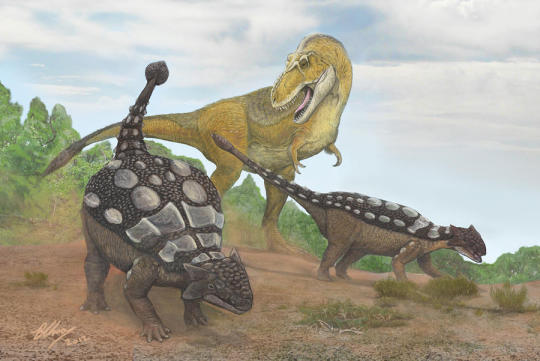
Cretaceous (11.9%): The absolute peak of megafauna in Earth's history, the time when animals twice as heavy as a fully-grown elephant still felt the need of an armor so thick it covered their eyelids. The time when life on Earth was at its most Most, and ending with the worst single day in its history too. (And also the time when flower plants, spiny-finned fish, and social insects filled the world, but seriously, who has the heart to ignore the giant dinosaurs?)

Ordovician (9.6%): Even though this was my vote, I was surprised to see it rank so high! (The first day, it was enck-to-neck with the Cretaceous!) Most summaries of the history of life don't even mention it by name. This is the Cambrian's younger, less cool but harder-working sibling, the time when animal life detached from the seafloor and filled the waters. Giant nautiloids, swimming trilobites, and the first (jawless) fish.
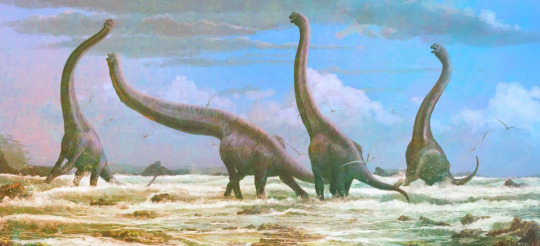
Jurassic (9.6%): Most of what I said of the Cretaceous also apply here. If you like giant sauropods and stegosaurs more than hadrosaurs and ceratopsians, or think that Tyrannosaurus is too mainstream and Allosaurus deserves more love, the Jurassic -- time of dinosaurs par excellence -- is right there.
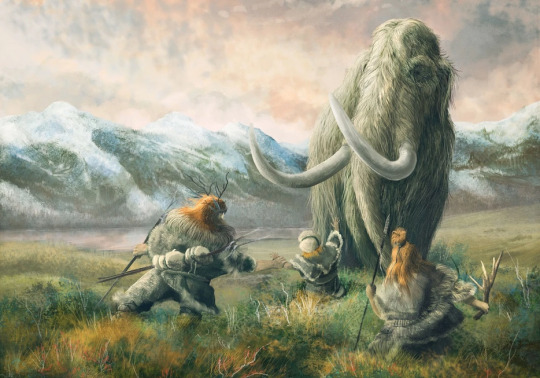
Quaternary (9.6%): The Cenozoic in general ranks pretty low -- too normal-looking I guess, we have birds and mammals already -- but the Quaternary stands far above the other two. I suppose Ice Age megafauna still retains its charm!
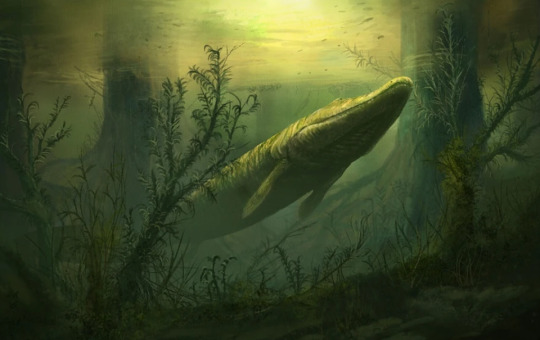
Devonian (8.8%): Ah, the golden age of fish diversity, the time when the land turned green and our ancestors left the ocean behind. Also the last jawless fish and trilobites had a really good time (the Permian extinction would only mop up the survivors). And the only period placoderms, taken out so soon, were given to shine.

Silurian (7.9%): The time of the very first land ecosystems... if they weren't already around in the Ordovician. Kind of a filler period, by comparison with the Ordovician and the Devonian. Heterostracan fish and sea scorpions are so cool, though.

Carboniferous (6.8%): The great swampy coal forests and their fauna of man-sized quasi-millipedes, raven-sized quasi-dragonflies, and giant armored amphibians is not quite as popular, however. I can't blame people for not caring much for coal anymore, I guess.
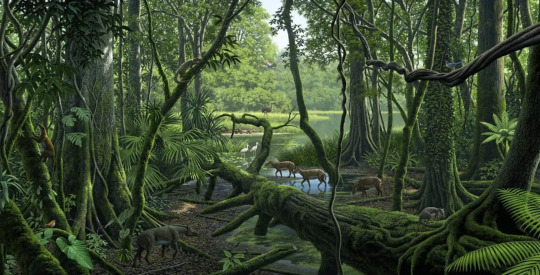
Paleogene (6.6%): The quiet time of respite after the downfall of dinosaurs, tropical jungles almost reaching the poles, and the first spread of primates while continents finally took their familiar arrangement. The Cenozoic is not so hot in general, it seems. (Will anyone appreciate the volcanic lake occasionally killing everything in its surroundings and creating one of the best fossil sites on Earth?)
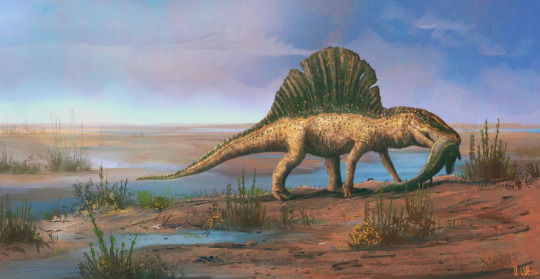
Triassic (6.5%): Triassic fauna is really underappreciated, if you ask me. Long-necked Tanystropheus and flat-toothed placodonts and chameleon-like drepanosaurs, and a profusion of quasi-crocodiles, and the dawn of mammals and dinosaurs, compressed in a brief respite between two mass extinctions.
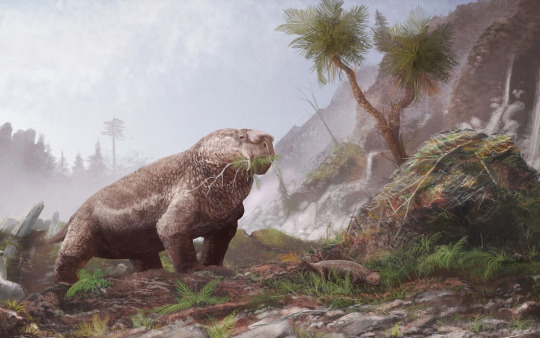
Permian (5.4%): Poor Permian. No love for the kingdom of synapsids -- sail-backed pelycosaurs and dagger-toothed gorgonopsian -- dethroned by two mass extinctions, and who would have to live in the shade of dinosaurs before resurging in the form of mammals? For Pangea stretching its burning desert heart from pole to pole? For Earth's most terrible mass extinction, that almost took out insects? Someone has to be near the bottom, I guess.
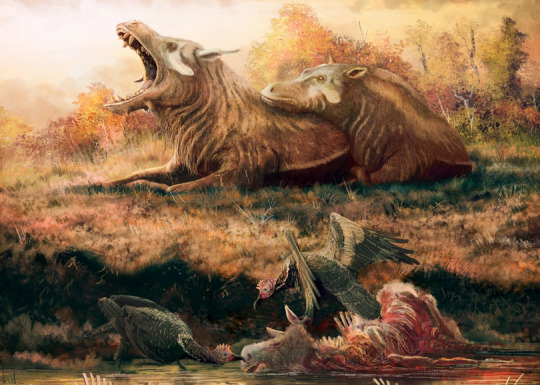
Neogene (2.6%): And there is the actual bottom. Dear Miocene, the golden age of apes and elephants, the time when a world of jungles became the world of woodlands and grasslands that we know today, too familiar to be popular and without the appeal of the Ice Age, someone had to be here.
(Picture credits: Cambrian, Devonian, Permian, Triassic, Jurassic, Neogene, Quaternary by Mark Witton; Carboniferous by Olorotitan; Cretaceous by Gogosardina; Paleogene by Raul Martin, kindly collected by Worldbuilding Pasta; Ordovician, Silurian from Ocean of Origins)
348 notes
·
View notes
Text
Cephalopod Fossils from Lyme Regis, England
My position as a Research Volunteer in the Section of Invertebrate Paleontology (IP) allows me to delve into stories about the collection that I find interesting. One of my research assignments is to investigate the fossils from Lyme Regis, England. The Lyme Regis fossils are part of the 130,000 specimens purchased by Andrew Carnegie from the Baron de Bayet of Belgium in 1903. Some of the Bayet fossils are incorporated into the museum’s Dinosaurs in Their Time (DITT) in the Triassic, Jurassic, Cretaceous, and a special Lyme Regis case that showcases 13 invertebrate and vertebrate fossils.
The village of Lyme Regis is situated on the Dorset Coast, and as such, receives some of the worst weather associated with the English Channel. The Lyme Regis cliffs and beaches have been a fossil hunting graveyard for two hundred years, first made famous by resident Mary Anning (1799 – 1847). When she was just twelve years old she found a large skeleton of a marine reptile known as an Ichthyosaur (literally “fish lizard”). Ichthyosaurs were predators that fed on Jurassic fishes and ammonites. It’s easy to see how she developed a love of fossils after discovering such a magnificent creature as a child. For years, she amassed collections of plesiosaurs, pterosaurs, fish skeletons, and other marine fossils and sold them for a living to paleontologists worldwide. In DITT, there are two examples of Ichthyosaur specimens, a skull (CM 877) and a three-foot-long skeleton (CM 23822). Unfortunately, Mary Anning was not recognized during her life for her accomplishments, probably because she was not a trained paleontologist and she was female. After her death, the collections became widely known to the scientific community, bringing about a better understanding of the paleontology of the Dorset coast.
A fascinating piece of trivia about Lyme Regis is the filming of the 1980 movie, The French Lieutenant’s Women, which depicts the lead male actor, Jeremy Irons, using a simple rock hammer to extract a fossil ammonite from the cliff. If only it was that easy to collect from the 300-meter sheer cliff. My supervisor, Albert Kollar, collected fossils along the Lyme Regis beach in 1999. He opined “most fossils are eroded naturally because of the storm waves coming in from the English Channel that eat away at the rock each year, collapsing to the beach in broken blocks that eventually expose the fossils over time.”
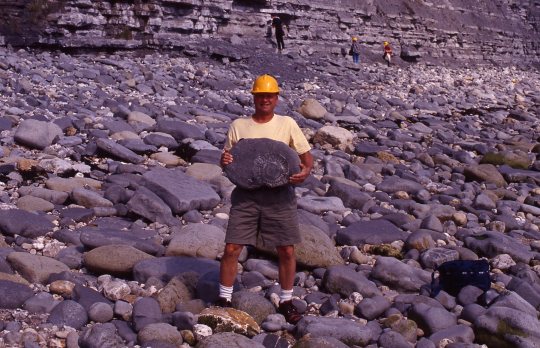
My project was to research the Lyme Regis mollusks i.e., ammonites, nautiloids, and belemnites, update their identification, and review the climate aspects of the Jurassic sea that once covered this part of Europe approximately 199 to 190 million years ago. Paleontologists use marine fossils to interpret past paleoclimates and the paleoenvironments in which the animals once lived. The Jurassic is commonly considered as an interval of sustained warmth without any well-documented glacial deposits at the polar regions. The Lyme Regis fossils are preserved in very discrete layers of limestone strata often named “Lias” by European geologists. The terminology used today is early Jurassic Sinemurian Stage. The fossil mollusks are singular specimen’s that measure approximately 1 inch to 8 inches in diameter. The Carnegie of Natural History collection contains 16 invertebrate specimens from the genera Acanthoteuthis, Asteroceras, Eoderoceras, Liparoceras, Lytoceras, Microderoceras, Nautilus, Radstockiceras, and Xipheroceras.
All Bayet fossils were recorded in the Carnegie Museum Catalog of Fossils. The Cephalopod Catalog contains ammonite, nautiloid, and belemnoid fossils assigned by Bayet and includes details such as collection localities and stratigraphic horizon. Some Lyme Regis specimens are recognized by having two letters “BK” and a painted number, as seen on CM 40666. In 1975, a Swiss paleontologist, Dr. Felix Wiedenmayer, was on a research sabbatical to study fossil sponges at the Carnegie Museum, as well as an expert on Mesozoic ammonites from Europe. He reviewed many Mesozoic ammonites providing updated identification to genus and species, and stratigraphic horizon data, including some of the Lyme Regis ammonite fossils.
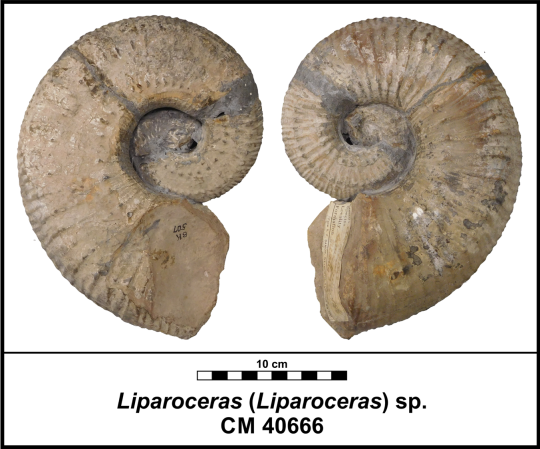
To complete the project, I created a virtual geology, paleontology, and exhibit folder in PowerPoint. This includes photographs of the specimens, a geologic map of Lyme Regis and the Dorset Coast, a Paleogeographic map, the distribution of genus and species in the collection, and references. The photographs in this study were taken by IP Research Associate/volunteer John Harper.
I have had a great experience at the Carnegie Museum of Natural History gaining knowledge about these fossil collections, stratigraphy, and geologic time. Now, I look forward to graduate school in part to study microfossils that lived in the seas during a climate “event” around 56 million years ago during the Paleogene Epoch. This event is called the “Paleocene-Eocene Thermal Maximum” (PETM), and is so named because it demarcates the boundary between these two epochs of geologic time. It has been a pleasure looking at these exceptional cephalopods at the Carnegie Museum, and I look forward to any more potential collaborations in the future.
William Vincett is a research volunteer in the Section of Invertebrate Paleontology and a graduate student at the University of Delaware. Museum employees and volunteers are encouraged to blog about their unique experiences and knowledge gained from working at the museum.
#Carnegie Museum of Natural History#Invertebrate Paleontology#Lyme Regis#Bayet fossils#Carnegie Museum Catalog of Fossils#Fossil#Fossils
132 notes
·
View notes
Photo

RARE 5" Cymatoceras neocomensis Fossil Nautilus – Aptian, Cretaceous – Seine-Maritime, France – Alice Purnell Collection
This listing features a rare and beautifully preserved fossil nautilus of the species Cymatoceras neocomensis from the Aptian Stage of the Early Cretaceous period, dating to approximately 125 to 113 million years ago. This exceptional specimen was found in Seine-Maritime, Normandy, France, and is part of the renowned Alice Purnell Collection, recognised for its museum-grade and scientifically documented fossils.
Cymatoceras is a genus of extinct nautiloid cephalopods, similar in appearance to the modern-day nautilus but differing in suture complexity and shell morphology. Cymatoceras neocomensis is distinguished by its rounded whorls, deep umbilicus, and distinctive ribbing pattern along the shell. These marine molluscs used gas-filled chambers in their shells for buoyancy, drifting through ancient seas as opportunistic feeders.
This particular specimen, measuring approximately 5 inches, shows excellent preservation of the coiling and ornamental features. It is a scientifically valuable and highly displayable fossil.
Geological Context: The Aptian Stage (125–113 million years ago) was a time of warm shallow seas, supporting diverse marine ecosystems. The region of Seine-Maritime in northern France is known for its fossiliferous limestone and marl deposits, producing exceptional marine fossils from the Early Cretaceous. These sediments offer insights into the evolution of marine faunas and palaeoenvironmental conditions.
Key Details:
Species: Cymatoceras neocomensis (Fossil Nautilus)
Fossil Type: Extinct marine nautiloid cephalopod
Age: Aptian Stage, Early Cretaceous (~125–113 million years ago)
Location Found: Seine-Maritime, France
Provenance: From the Alice Purnell Collection
Size: Approx. 5 inches (see 1cm scale cube in photo)
Condition: Exceptional preservation with visible shell details and natural form
Authenticity: 100% genuine fossil, supplied with a Certificate of Authenticity
Photo: The actual specimen shown is the one you will receive
Scientific & Collector Value: Fossils of Cymatoceras neocomensis are relatively rare and prized by both palaeontologists and collectors for their diagnostic features and importance in cephalopod evolution. Its inclusion in the Alice Purnell Collection adds further value, ensuring both authenticity and historical significance.
All of our Fossils are 100% Genuine Specimens & come with a Certificate of Authenticity.
Fast & Secure Shipping – Professionally packaged and promptly shipped to ensure safe delivery.
Own a piece of ancient marine history with this rare 5" Cymatoceras neocomensis nautilus fossil from the Aptian of Seine-Maritime, France.
#Cymatoceras neocomensis fossil#Cretaceous fossil nautilus#Aptian nautiloid France#rare fossil cephalopod#5 inch fossil nautilus#Seine-Maritime fossil#certified fossil specimen#Alice Purnell Collection#real nautilus shell fossil#marine fossil Aptian#display fossil nautilus
0 notes
Photo

Ammonites are an extinct group of marine invertebrate animals which died out at the end of the Cretaceous period. These mollusks are more closely related to living coleoids (i.e. octopuses, squid, and cuttlefish) than they are to shelled nautiloids such as the living Nautilus species.
Source: https://www.fossilera.com/fossils/6-polished-agatized-ammonite-cleoniceras-madagascar--10
173 notes
·
View notes
Text
:D
Oh, yeah, the colors (which are based on the official International Chronostratigraphic Chart):
Pink is the final part of the Ediacaran period (Ediacara fauna (duh), earliest armored fossils) Greenish-greyish is the Cambrian, first of the Paleozoic era (first arthropods, mollusks, & vertebrates) Dark teal is the Ordovician (giant nautiloids, jawless fish, coral, first Mass Extinction) Palest teal is the Silurian (first plants & arthropods on land) Brown is the Devonian (first amphibians and trees, second Mass Extinction) Middle teal is the Carboniferous (coal forests, first reptiles) Red is the Permian (Pangea, mammal-like reptiles, third Mass Extinction) Purple is the Triassic, first of the Mesozoic era (first dinosaurs, pterosaurs, and mammals, fourth Mass Extinction) Blue is the Jurassic (giant dinosaurs and marine reptiles, first birds) Green is the Cretaceous (more giant dinosaurs and pterosaurs, flower plants, social insects, fifth Mass Extinction) Orange is the Paleogene, first of the Cenozoic era (modern birds and mammals) Bright yellow is the Neogene (more modern birds and mammals, apes, grasslands) Pale yellow is the Quaternary (humans show up)

Okay but the geological timescale fits perfectly on a clock and I love it.
578 notes
·
View notes
Photo

Almost-Living Fossils Month #12 -- The Other Nautiluses
Nautiloids are represented today by just two living genera (Nautilus and Allonautilus), but they have a lengthy evolutionary history going back almost 500 million years.
The peak of their diversity was during the first half of the Paleozoic, with many different shapes of shells from coiled to straight, then they began to decline when their relatives the ammonites and coleoids appeared and began to compete for similar ecological niches. Although a few groups of nautiloids survived through the end-Permian mass extinction, most of them had disappeared by the end of the Triassic, leaving just one major remaining lineage known as the Nautilina (or Nautilaceae).
During the mid-to-late Jurassic (~165 mya) two new groups split away from the ancestors of the modern nautiluses -- the cymatoceratids and the hercoglossids.
Cymatoceratids such as Cymatoceras sakalavum here had shells with a ribbed texture. Living during the Early Cretaceous, about 112-109 million years ago, this particular species is known from Japan and Madagascar and could reach a shell diameter of over 15cm (6″).
Hercoglossids, meanwhile, were much more smooth in appearance, but both groups also had more complex undulating sutures between their internal chambers than modern nautiluses do.
These nautiluses made it through the end-Cretaceous mass extinction and had a brief period of renewed success, filling the ecological roles left vacant by the extinct ammonites. But by the end of the Oligocene (~23 mya) both the cymatoceratids and hercoglossids vanished, possibly unable to deal with cooling oceans and the evolution of new predators.
Some of the hercoglossids’ Cenozoic descendants, the aturiids, managed to last a little longer into the Early Pliocene (~5 mya) before another period of cooling seems to have finished them off. Past that point, all that was left of the once-massive nautiloid lineage were their cousins the nautilids, who gave rise to today’s few living representatives.
(It’s also worth noting that the classification of the cymatoceratids seems to be in flux right now. Some paleontologists currently don’t consider Cymatoceras itself to actually be part of the group, instead being a nautilid much closer related to modern nautiluses. If this is the case then the cymatoceratids may not have actually survived past the Late Cretaceous -- but the Cymatoceras genus alone still counts as an “almost-living” fossil since its various species ranged from the Late Jurassic to the Late Oligocene.)
#almost living fossils month#science illustration#paleontology#paleoart#palaeoblr#hercoglossidae#cymatoceratidae#nautilina#nautilaceae#nautilus#nautilida#nautiloidea#cephalopod#mollusc#invertebrate#art#it's a peppermint
164 notes
·
View notes
Photo


Doodledex - #138 Omanyte
...Ok, I know you were all clamoring to make Twitch Plays Pokemon jokes here more than with Pidgeot, so go ahead. This is the last time, though!
Anyways, it’s pretty fitting that the first Fossil Pokemon in the dex is an ammonite, since they were once really common in the ancient seas, starting from the Devonian! In fact, these molluscs managed to survive the Permian extinction event (with only a few species surviving but quickly multiplying again), something that even wiped out the just as common trilobites! Unfortunately, they failed to survive the Cretaceous extinction. (The surviving nautiloids, on the other hand, are not ammonites, and are even more ancient, going all the way back to the Cambrian!)
#pokemon#doodledex#omanyte#as for our good buddy omanyte here#its method of swimming is mostly in line with how the nautilus swims#(excluding its siphon)#but it isn't an active predator or even a scavenger!#it filter feeds instead which is something ammonites may have actually done!#(these interesting extinct cephalopod facts brought to you by wikipedia!)
11 notes
·
View notes
Text
Earth Cycles II

Limestone found in Weatherford, TX contains nautiloid fossils that appear to be cymatoceras or in the cephalopoda class. These fossils are likely from the Cretaceous period of the Mesozoic Era, 79 to 66 million years ago, but could be up to 260 million years old. During this time what is now Texas was completely covered by a shallow ocean which is what left behind the fossils that you can find in the limestone in Texas today. Similar cretaceous-like species can still be found in the ocean today, though not in Central Texas. Limestone in parts of Texas can be found up to about 42 feet deep and was once the floor of the ocean. Limestone may often be confused by some as being caliche, while caliche is a calcified compound it does not contain fossils like limestone. This supports the theory that if Texas was once covered by the ocean millions of years ago that perhaps one day the earth would cycle back to covering Texas by the ocean once again, and perhaps we’ve just been referring to the natural and very slow warming of the earth and rising of the tides as Global Warming.

References:
Hessong, A. (2017, October 17). Texas limestone hides fossils of sea creatures in the hill country. Texas Hill Country. https://texashillcountry.com/find-fossils-texas-limestone/
Judson, O. (2015, January). When Texas was at the bottom of the sea. Smithsonian Magazine. https://www.smithsonianmag.com/travel/when-texas-was-bottom-sea-180953653/
Miller, A. K., & Harris, R. A. (1945). North American Cymatoceratidae (Mesozoic Nautiloidea). Journal of Paleontology, 19(1), 1–13. http://www.jstor.org/stable/1299162
National Geographic. (2015, April 3). Cretaceous period. https://www.nationalgeographic.com/science/article/cretaceous
TXFossils. (n.d.). https://www.txfossils.com
0 notes
Photo

Iridescent ammonite This beautiful specimen of a fossil Ammonite dates from around 71 million years ago, the Late Cretaceous, and was recovered from the Bearpaw Formation, Alberta, Canada. Interference from the layers of the shell creates this stunning array of iridescent colours, reminiscent of opal and treasured by collectors. Ammonites are now extinct, but lived in the oceans for hundreds of millions of years, from the Devonian through to the Cretaceous. Similar in appearance to modern nautiloids, in fact they have more in common with cuttlefish and squid. This sample was auctioned by Bonhams in New York. ~SATR http://www.geopoem.com/2013/11/iridescent-ammonite-for-sale.html http://www.bonhams.com/auctions/21076/lot/1066/
154 notes
·
View notes